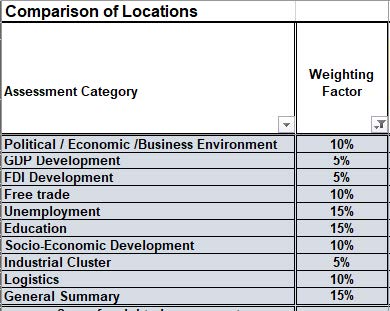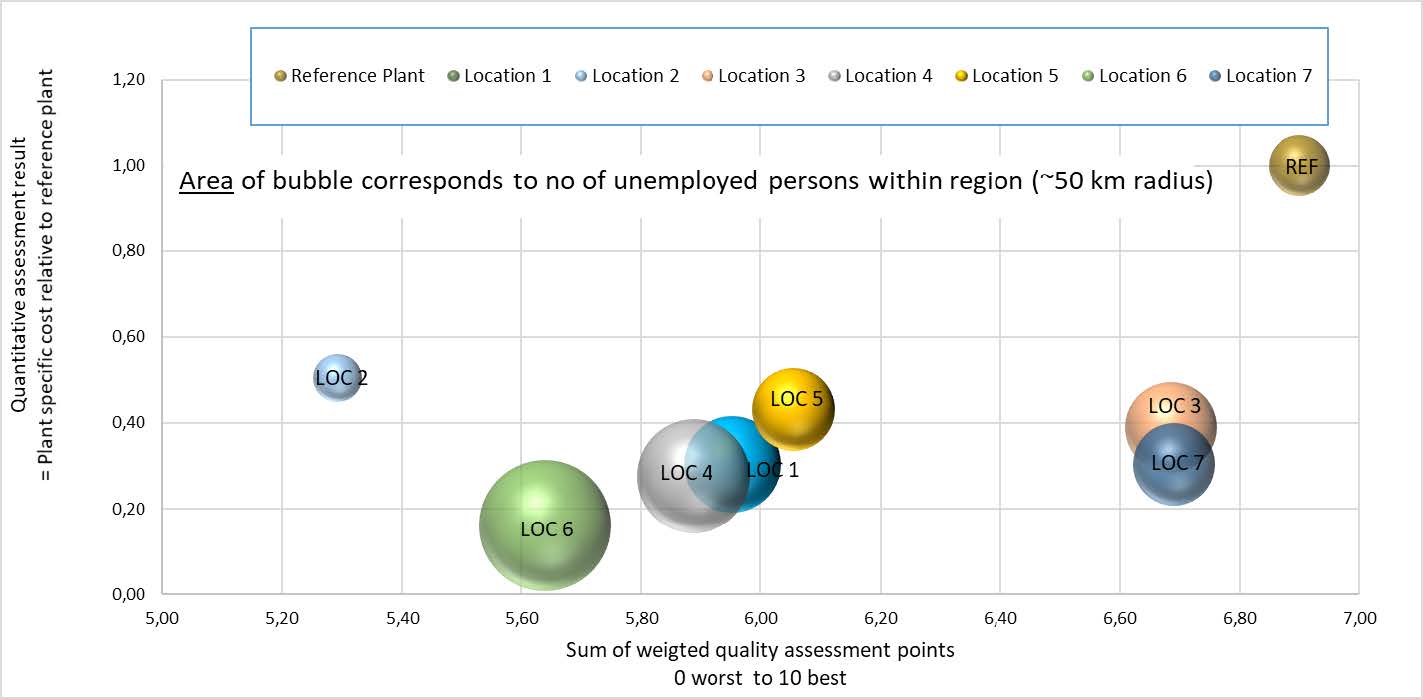In today’s high dynamic economic environment, the framework conditions for international active enterprises are constantly changing. The capability of high speed adaptation is decisive for shaping a prosperous outlook. Such rapid adjustments may lead to the requirement to consider new locations for production or other company activities on one side and questioning existing locations on the other side.
Location analyzes
Adaptation speed is crucial.

The choice of a suitable company location represents a far-reaching strategic decision for an enterprise and must therefore be carefully considered. Many internal and external influencing factors must be considered, need to be compared with the framework conditions of a potential location and appropriate conclusions must be drawn.
Based on existing experience, a methodology was developed that enables companies to carry out an objective, fact-based assessment of the suitability of potential locations.
This is based on a very detailed knowledge of all regions in Eastern Europe at the district / province level. For an exemplary location, many individual latest key figures and evaluation criteria are used and are categorized into assessment groups of
- qualitative criteria and
- quantitative criteria
Qualitative assessment groups describe the qualitative environment of a location such as economic, macroeconomic, social framework conditions, green environment etc. (See figure 1).

Figure 1:Assessment groups of qualitative criteria
The requirements of the individual enterprise are taken into account by individually adjusting of the weighting factors. For example, in the case of work-intensive tasks, those criteria are given high weighting factors that are related to the availability of workforce (unemployment rate, number of employees in the area, etc.). Is there a need for highly qualified employees, then these criteria are rated with higher weighting factors, that are related to training or educational opportunities or to special know-how in the vicinity of the location. Alternatively, the determination of the weighting factors can be done by methodical 1: 1 comparison of the individual criteria.
The result of the qualitative evaluation is presented as weighted points on a scale of 0-10, with 10 being the best achievable evaluation result.
In the case of quantitative criteria, basically the cost structure of a location is assessed. This includes, for example, personnel costs, logistics costs, infrastructure costs. Cost-reducing factors such as public funding opportunities are also taken into account. A final evaluation is carried out based on a “landed cost” assessment of the products. It is recommended, to rate the evaluation in relation to an existing reference location too.
The overall results can be represented as shown in figure 2 exemplarily, as a 3-dimensional graph. The weighted qualitative results are scaled on the horizontal axis and the quantitative results are shown on the vertical axis, calculated relative to a reference plant. In this case, the third dimension in the graph is represented by the area of the bubbles in the bubble diagram. Here the number of unemployed employable people within a radius of 50 km is proportional to the area of the bubbles shown. As an example, it can be seen from the diagram that location 6 has the greatest number of potential employees available on the labour market at the lowest overall cost level. However, an unfavourable assessment of the qualitative criteria must be taken into account and, if necessary, compensation measures should be considered.

Figure 2: Example of result representation of a comparison of locations
Summarizing, it can be stated, that the method described provides an objective assessment for selecting or comparing different locations for a company. By updating the data behind the model and adapting the weighting factors to the needs of the respective customer, an analysis specific to changed framework conditions can be carried out quickly.
The method has already been used successfully for several customers, especially for considerations in Eastern and South-Eastern Europe, but also for locations in West Africa. Exemplary, in one case it led to the decision to build a complete new location and in a second case it was used to make a decision for consolidation of existing locations.



